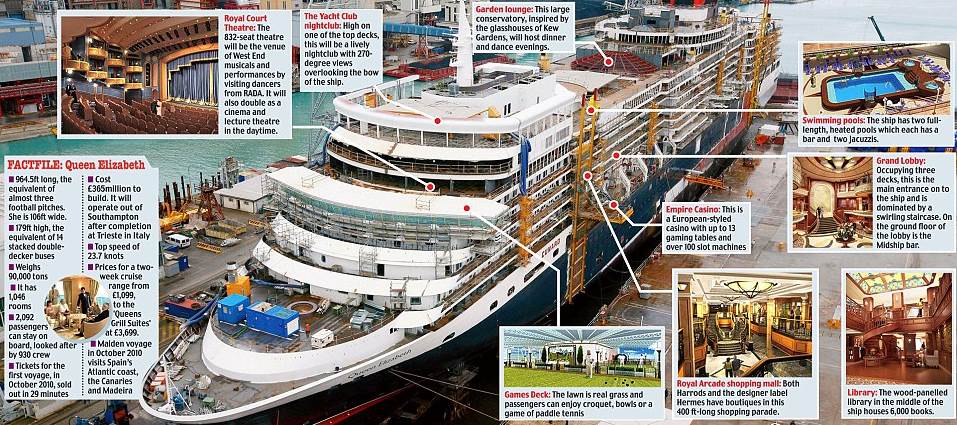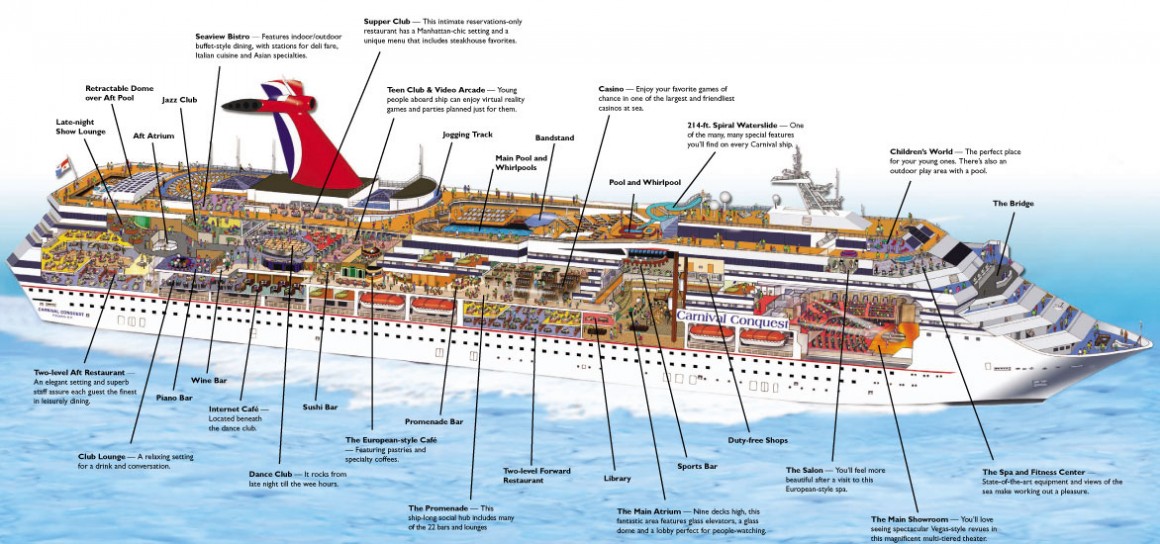 Q – As a senior financial analyst with one of the nation’s largest investment firms, I would like to pose a personal question or two as well as a question about industry pricing. Although I don’t specialize in the travel sector, I am sometimes asked about major cruise line stocks and current pricing models. Wondering if you might provide some bullet points about the big picture in terms of cruise pricing going forward?
Q – As a senior financial analyst with one of the nation’s largest investment firms, I would like to pose a personal question or two as well as a question about industry pricing. Although I don’t specialize in the travel sector, I am sometimes asked about major cruise line stocks and current pricing models. Wondering if you might provide some bullet points about the big picture in terms of cruise pricing going forward?
I am also wondering about your personal pricing model. How do you make money if you are not taking money from the cruise lines you review? Do you work with clients? I would prefer not to have my name used. Please feel free to respond online or privately. Congratulations on an engaging web site.
A – We will take your questions in order. These are some important takeaways regarding present and future cruise pricing models:
- Going forward between now and 2020, ocean-going cruise lines have placed 41 major new ship orders at a cost of just over $30 billion. This will represent 132,128 new berths. You do have to factor in the retirement and sale of older ships as that will affect growth rate substantially. It is fair to say that the industry is growing though continuing growth though not at the rate of the past five years in terms of new ship construction.
- Discounting will always be present but it will be more controlled. List prices will be raised to accommodate up to 2-1 level pricing on the top-rated lines. The largest players will have fewer deep discounts and more value-adds for purchase such as shore excursions, food, and drink packages. Last-minute discounts are seen now by virtually all lines as counter-productive. The larger lines are willing to sail with empty cabins rather than penalize the majority of already-booked passengers.
- About one-third of all travel agents have left the profession but the average sale of the average agent has increased and studies show that both the positive perception of the value of an agent and the percentage of cruise bookings originating with agents has increased. Consortium groups remain the largest single entity for cruise bookings and there are currently no lines that offer pricing that undercuts that offered by travel agents. It is a level playing field and cruise executives feel it will remain so in the foreseeable future.
- The cruise industry looks at the success of the big three US airlines and their efforts to end the bundling of all services under a price lead-in. Delta announced it made over $1 billion in additional revenues based on new charges for amenity upgrades. Look for the major cruise lines to copy this model so that the actual cost of a cruise will include numerous guest add-ons for purchase that do not have to be listed in the advertised price. Preferred dining seating and advance show-time reservations will be sold. More and more dining venues will involve extra charges. Drinks and shore excursions will be sold in packages to allow the guest to feel that they are having an “inclusive” vacation.
- Fuel cost savings have been significant but they are less impactful in the cruise sector than they are in the airline sector. What is really expanding the growth of the cruise industry is expansion in China (jury is still out on that one as China experiences some challenging economic times) and Cuba. While there is universal enthusiasm for cruises to Cuba, the focus of cruise line concerns has to do with the tourism infrastructure ashore on the island. There are currently not enough air-conditioned tour buses, highly developed shore excursion sites, or qualified guides to handle a dozen large ships arriving on a daily basis. Cruise lines are confident they will make money in Cuba on initial sales. They are worried about word-of-mouth once guests start returning home.
- The elephant in the financial room is the possibility of a terrorist attack on a passenger vessel and the ripple effects that might have throughout the industry. The industry has chosen not to talk much about security in the past but that will likely change.
 The top-ten cruise lines in the world represent less than 30% of the total cruise market and they operate in a different sphere. While the mega-lines believe they have a price point beyond which they cannot go, the top-tier cruise lines believe that their customer is driven by a refusal to be “nickel and dimed” while on vacation. So extra charge bundling is not something they are willing to pursue. The Alaska market has slowed and cruises to the central Med.. even among the very highest-rated lines, have now experienced a downturn. The top cruise lines are subsidizing air and pre/post hotel packages on top of their “one sails free” pricing formula. This is possible because of artificially high brochure pricing rates that virtually no one ever pays. This is a subject rarely discussed so consumers can feel that they are receiving a “deal” even at the highest end of the spectrum.
The top-ten cruise lines in the world represent less than 30% of the total cruise market and they operate in a different sphere. While the mega-lines believe they have a price point beyond which they cannot go, the top-tier cruise lines believe that their customer is driven by a refusal to be “nickel and dimed” while on vacation. So extra charge bundling is not something they are willing to pursue. The Alaska market has slowed and cruises to the central Med.. even among the very highest-rated lines, have now experienced a downturn. The top cruise lines are subsidizing air and pre/post hotel packages on top of their “one sails free” pricing formula. This is possible because of artificially high brochure pricing rates that virtually no one ever pays. This is a subject rarely discussed so consumers can feel that they are receiving a “deal” even at the highest end of the spectrum.- The cruise industry is currently realizing record-breaking profits along with lower fuel costs. Their major problem is finding new destinations and creating the infrastructure ashore to serve the needs of their guests. On-board staffing is not really an industry problem despite rapid expansion.
- Cruise line accounting would be really interesting to the consumer because each area of a ship is broken down as a separate revenue-producing segment. Any cruise line CEO can, for example, explain in detail why drink revenues on a seven-night Alaska cruise are far lower than a comparable 7-night Caribbean cruise. That is one of many reasons that per-diems on an Alaska cruise are higher.
Now those are just some really broad generalizations. As to your questions about us: We are in a rather unique position in that we work with clients in 46 states and we are able to pick and choose our clients carefully. So no selling is necessary. If our sites are helpful and we never had a single reader contact us, we’d still be fine. Very fine. Last year we were named the top revenue producers in the entire $16.3 billion Virtuoso Network. So we are in a unique position to simply tell the truth, which has been our business model for three decades. We accept no money from cruise lines for this site and, as you can see, we do not permit advertising of any kind. Our sites cost us thousands of dollars a year to maintain – not to mention the time involved. But we hope we are helping consumers who are intentionally misled by phony travel hype, fake reviews, and advertising that is intellectually insulting. And every once in a while, we come across someone incredibly nice with whom we can enjoy a long-term business relationship. Really hope this helps explain some of what you asked and apologies to our readers for the length of this response.
